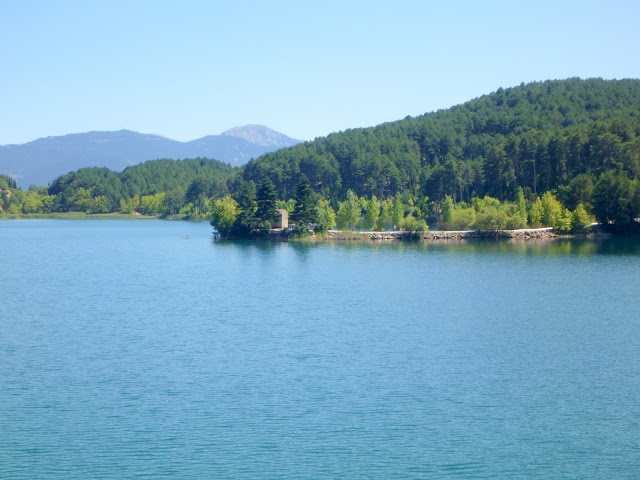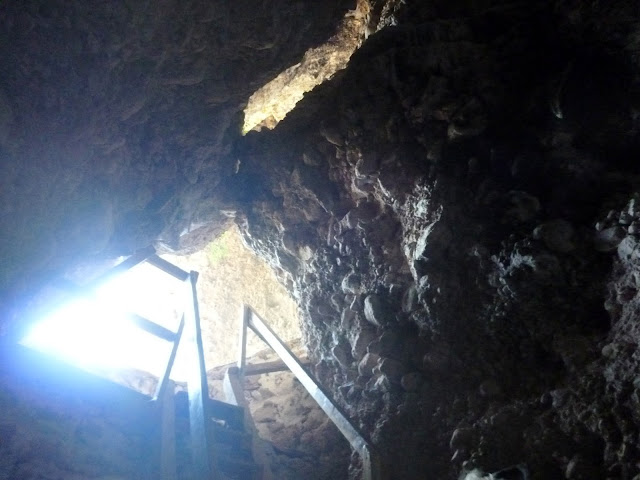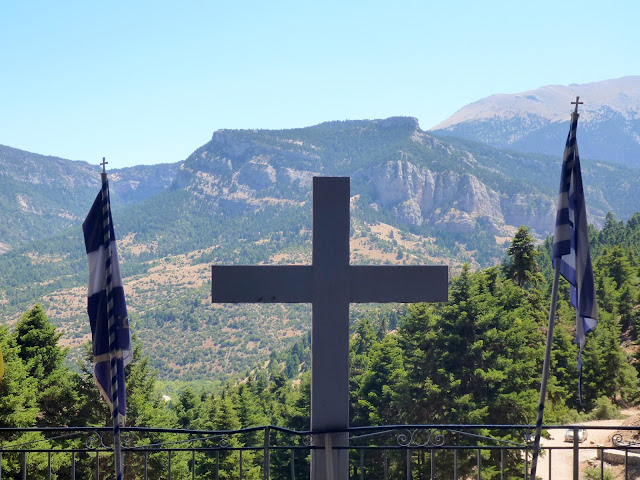Lake Doxa is the only mountain lake in Greece, 900 metres above sea level. It's near the ancient town of Feneos and it's an artificial lake, fed and drained by the small river Doxa which empties into the plain of Feneos.

Our route from The Madonna of the Rocks to the lake was over the mountains, with the plateau of Feneos, a valley, at our feet. It's a beautiful plateau like a vast mosaic of colours - we did not stop the car so I did not take any pictures, and I could not find any satisfactory ones on the web. The plateau is the remains of an old lake which disappeared in one night. The cause was the creation of a sink hole, an impressive opening of a diameter of 10 metres. Legend has it that the sink hole is the work of Hercules who decided to drain the swamp in order to provide the villagers with fertile soil.
Even today, the rain water which ends up on the plateau from the surrounding mountains falls into the sink hole and after traveling a subterranean route the water springs near the village Lykouri, forming the river Ladonas.

The lake is surrounded by pine, Cephalonica fir and oak forests.

The coexistence of wetlands and an alpine landscape make the region a unique place for wild flora and fauna. Otters are to be found here, but we were not fortunate to see any.
We did see lots of fish and tadpoles though.
The lake is surrounded by three of the highest mountains in the Peloponnese, Ziria, Helmos, and Dourdouvana.

In the heart of the lake is a small peninsula and at the end of it, the small church of Agios Fanourios.
There is a small platform on the edge of the lake near the church and quite a few people were swimming around there
I don't know what this old arch was part of, but I would have loved to have swum under it.
In the distance we could see the damn that regulates the flow of water keeping the valley dry
It's an enchanted place
My sister who had visited lake Doxa before remembered having seen horses grazing at a different part of the lake, so we went to investigate
We found them at the exact same spot, some tethered, some not.
A group of people were having a picnic
and from this spot we could see the peninsula and the little church.





























































